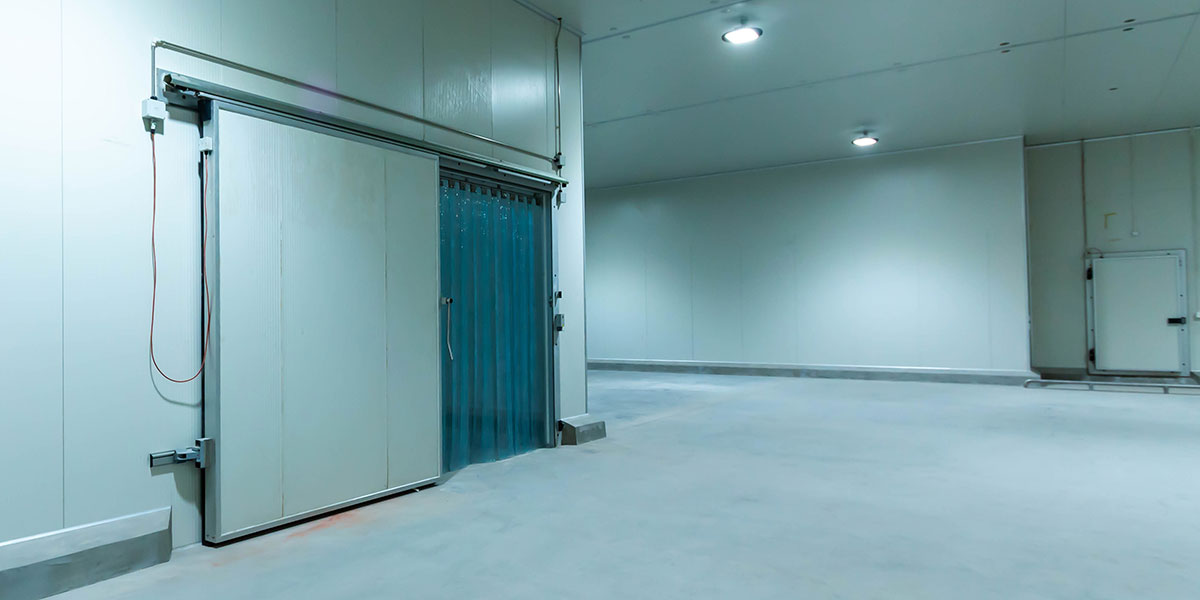
Cold Weather Applications
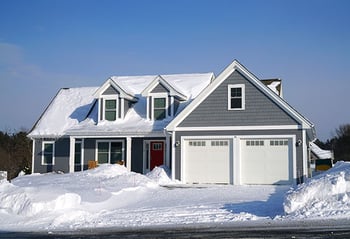 Temperatures are starting to drop throughout North America as we transition from fall to winter. These next few months can offer a host of challenges for floor coating installers.
Temperatures are starting to drop throughout North America as we transition from fall to winter. These next few months can offer a host of challenges for floor coating installers.
There are several key factors to keep in mind as you work to limit coating issues related to cold weather and keep your business operating at a high level. For those of us who work year-round, one of the key components for success is properly understanding the coating materials we use and how they are impacted by colder environments.
Epoxies:
When epoxy resin is mixed with a hardener, a chemical reaction takes place that generates the heat necessary for it to properly cure. This exothermic reaction is why epoxies tend to cure faster at higher temperatures and slower in colder climates. Epoxy dry times are directly impacted by: (1) the surrounding ambient temperature, (2) the temperature of the epoxy material itself, and (3) the slab temperature. In general, epoxies should be applied at or above 55°F, however there are some cold-cure epoxies that incorporate special hardeners which will allow for application down to 45°F.
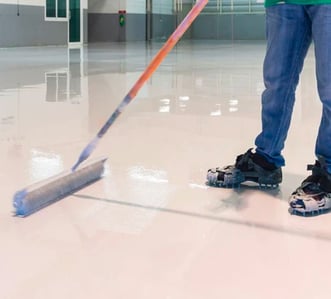 In addition to impacting dry times, lower temperatures may also significantly thicken material viscosity. The material may not flow out as easily or may experience adhesion issues with the underlying substrate. Thicker viscosities may also negatively impact mixing, leading to improper curing and soft spots on the finished floor. An inconsistent finish or even bubbles may also result in the final film as a result of cold temperature applications.
In addition to impacting dry times, lower temperatures may also significantly thicken material viscosity. The material may not flow out as easily or may experience adhesion issues with the underlying substrate. Thicker viscosities may also negatively impact mixing, leading to improper curing and soft spots on the finished floor. An inconsistent finish or even bubbles may also result in the final film as a result of cold temperature applications.
If using epoxy coating in a colder environment, it is critical that both the ambient temperature AND the concrete slab be brought to an appropriate level prior to installation. In addition, the material should also be acclimated to room temperature prior to coating.
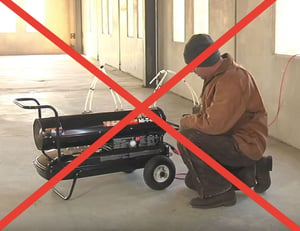 DO NOT EVER USE PROPANE or KEROSENE HEATERS.
DO NOT EVER USE PROPANE or KEROSENE HEATERS.
In the process of warming an area prior to or during coating, never use propane or kerosene heaters. The combustion from these heaters will generate increased levels of CO2 that will lead to amine blush on the surface of the epoxy. Amine blush is a waxy-like film that can result from rising humidity levels or elevated levels of CO2. It appears as white streaks on the coating film and will almost certainly create inter-coat adhesion issues with your coating system.
Polyaspartics:
Properly formulated two-component Aliphatic Polyaspartic coatings offer the benefit of cold-temperature curing. Lower temperatures may slightly increase dry times, however polyaspartics will still ultimately cure. Polyaspartics also rely on ambient humidity in the air to help the material properly cross-link. Less humid air common to colder environments may also extend dry times for polyaspartics. 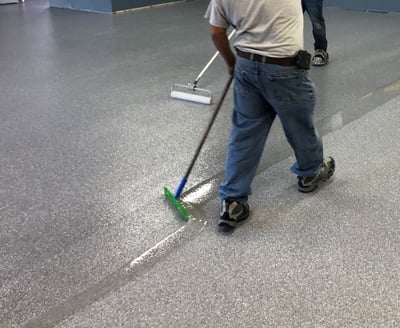 As is the case with all coating materials, polyaspartics should be kept at room temperature prior to application to help prevent issues with mixing and to optimize adhesion. Higher-solids materials may benefit from a bit of solvent to help loosen the material as it is applied to cold slabs. The Kinetic™, Kinetic™ 85, and Kinetic™ HS materials from Resinwerks all provide for cold-temperature cure. These polyaspartic coatings can be used direct to concrete as prime or broadcast coats for flake and quartz systems. They may also be used as topcoats in a variety of systems ranging from residential garages to industrial manufacturing floors. Kinetic™ polyaspartics offer superior performance and are terrific one-day floor systems for cold weather. For more information on these materials or to get a quote for your next project please contact us today.
As is the case with all coating materials, polyaspartics should be kept at room temperature prior to application to help prevent issues with mixing and to optimize adhesion. Higher-solids materials may benefit from a bit of solvent to help loosen the material as it is applied to cold slabs. The Kinetic™, Kinetic™ 85, and Kinetic™ HS materials from Resinwerks all provide for cold-temperature cure. These polyaspartic coatings can be used direct to concrete as prime or broadcast coats for flake and quartz systems. They may also be used as topcoats in a variety of systems ranging from residential garages to industrial manufacturing floors. Kinetic™ polyaspartics offer superior performance and are terrific one-day floor systems for cold weather. For more information on these materials or to get a quote for your next project please contact us today.


